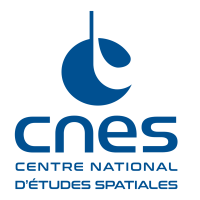Mesurer l'humidité des sols et la salinité des océans, telle est la mission du satellite européen SMOS (Soil Moisture and Ocean Salinity), lancé en 2009. Les données recueillies par le satellite permettent de mieux comprendre les grandes composantes du cycle de l’eau et du carbone tant sur les océans que sur les terres émergées.
Informations essentielles
| Mission | Mesure de l'humidité des sols, du contenu en eau de la végétation, et de la salinité des océans |
|---|---|
| Domaine CNES | Observation |
| Date de début | Lancement le 2 novembre 2009 |
| Partenaires | ESA, CDTI |
| Lieu | Orbite circulaire héliosynchrone à 755 km d'altitude |
| Durée | Prolongé jusqu’en 2026 (2028 envisagé) |
| Statut du projet | En exploitation |
Chiffres clés
- 670 kg : masse du satellite
- 21 cm : longueur d’onde d’observation (bande L)
- <0,1 PSU (Unité de Salinité Pratique) : précision de mesure de la salinité des océans
- 4% : précision de mesure de l’humidité des sols
Dates clés
- 2 novembre 2009 : Lancement du satellite SMOS par Rokot
- 16 septembre 2009 : Transfert du satellite au site de lancement de Plesetsk
- Juillet 2007 : Début des tests du satellite
- Juin 2007 : Livraison du modèle de vol de la charge utile
- Avril 2007 : Livraison du modèle de vol de la plateforme PROTEUS du satellite
- Septembre 2005 : Début de la phase C du développement du satellite
- Octobre 2004 : Début de la phase B du développement du satellite
- Juin 2004 : Début de la phase C/D du développement de la charge utile
- Novembre 2001 : Début de la phase B du développement de la charge utile
- Octobre 2000 : Début de la phase A du développement de la charge utile
- Avril 1999 : Sélection du projet SMOS par l’ESA
Le projet en bref
Lancée le 2 novembre 2009, la mission SMOS a pour but de fournir des cartes d'humidité des sols et de salinité des océans. Les données de la mission sont précieuses pour les météorologues, les hydrologues et les climatologues. En effet, le suivi de la salinité des océans permet de détecter les courants marins, qui influent fortement sur le temps et le climat, et de mieux comprendre le rôle des océans dans le cycle du carbone. Quant à la mesure de l’humidité des sols, elle renseigne sur les interactions entre la surface de la Terre, la végétation et l'atmosphère, ce qui permet d'augmenter la précision des prévisions météorologiques. Ces données permettent également de mieux évaluer les risques d’inondation et de sécheresse, contribuant ainsi à une meilleure gestion des ressources en eau. Pour réaliser ces mesures, le satellite dispose d’un radiomètre qui mesure le rayonnement électromagnétique micro-ondes émis par la surface de la Terre, à une fréquence très sensible au contenu en eau.
Rôle du CNES dans le projet
Sélectionnée par l’ESA en tant que deuxième mission d'opportunités de son programme Earth Explorer, la mission SMOS est placée sous la responsabilité de l’ESA, du CNES et du CDTI (Centre pour le Développement Industriel et Technique, Espagne). Le CNES est impliqué à plusieurs titres dans cette mission : tout d'abord, le PI (Investigateur Principal) de SMOS est un chercheur Ingénieur de l'agence française, qui a fourni la plateforme du satellite, et qui dirige les activités de mesure menées par le satellite. Le CNES a aussi développé et opère le centre de contrôle du satellite SMOS depuis le Centre Spatial de Toulouse, ainsi que le Centre Aval de Traitement des Données SMOS (CATDS) de Plouzané (France).
Contacts CNES
Chef de Projet Développement CNES
François BERMUDO
Courriel : francois.bermudo at cnes.fr
Principal Investigateur (PI)
Yann KERR
Courriel : yann.kerr at cesbio.cnes.fr
Responsable thématique Biosphère Continentale du CNES
Philippe MAISONGRANDE
Courriel : philippe.maisongrande at cnes.fr





